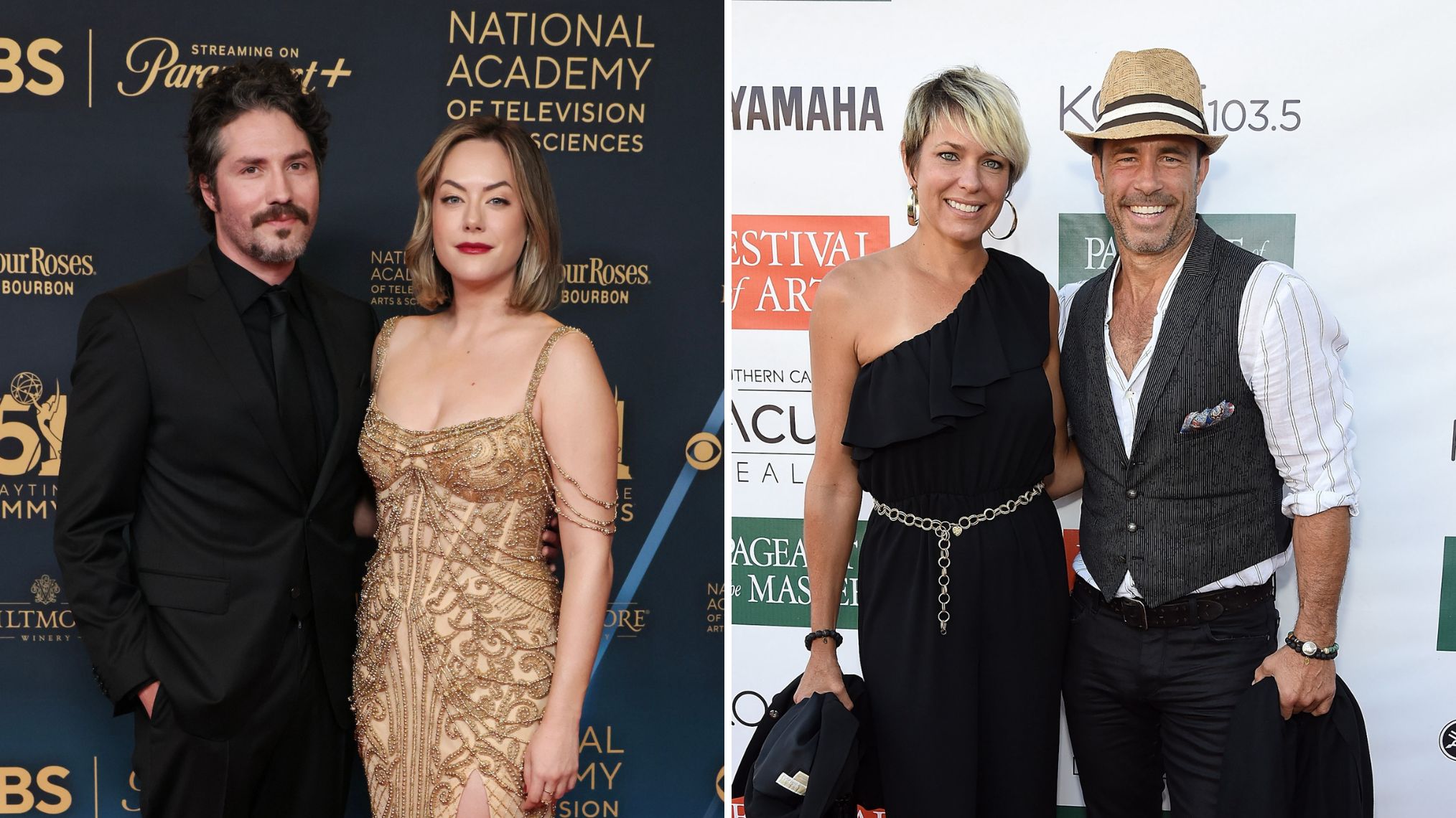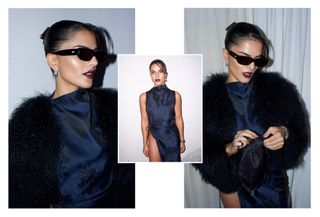
The year was 2000, nu metal was starting to dominate radio and Limp Bizkit were “rollin’, rollin’, rollin'” with plenty of momentum as they made the jump from supporting their Significant Other album to working on what fans would come to know as Chocolate Starfish and the Hot Dog Flavored Water.
“We had this huge record to follow up,” guitarist Wes Borland told Louder Sound. “There was pressure, but we didn’t feel insecure or like we couldn’t follow it. We felt really confident going in, and I knew what I wanted to do. I knew it was gonna be different from Significant Other – and better.”
The band lined up Terry Date to join them in producing the album, got some assistance from Scott Weiland and John Abraham on a number of tracks and had Swizz Beatz oversee production for a second version of “Rollin’,” subtitled Urban Assault Vehicle that featured guest rappers DMX, Method Man and Redman. Simply put, Limp Bizkit were able to call the shots and were in a position to land just about anyone they wanted for the record.
They had also been accepted for working hip-hop into their harder rock song. Fred Durst recalled, “People were either high on the emotion of things being fresh and exciting in terms of new sounds and urban music coming into heavy music, or they were rebelling against that. People who liked different kinds of music got what they wanted for the first time. It was that one moment in time when the planets lined up and we all got to share that moment together. It meant something to a big group of people who had never been heard before. It was special.”
“It was really good,” says Borland. “We were all [recording] in the same room and we wrote songs and recorded them as we went. I don’t even remember how many weeks we recorded for, but I just remember there was one day that came where we were listening to everything we had, and Fred [Durst] goes, ‘I think we’re done.’”
Bassist Sam Rivers reflects to Rock Sound, “It was all such a blur. The writing process was probably the funniest time I’ve had in my life; parties every night and no pressure. It was so much fun.”
The fun even spilled out onto the title for their album, which combined a pair of “in jokes” for the band. “Chocolate Starfish” came from Durst, who used the colorful term for a part of the anatomy to refer to how some people were viewing him at the time. Meanwhile, Borland had a joke about the taste of a certain water product that carried over as well. “It was my version of Sergeant Pepper’s Lonely Heart’s Club Band. I was the asshole, and the other guys could be the dicks,” said Durst.
That said, it wasn’t all fun and games as success started to impinge on the good times a bit. “There were definitely good times, but the record company were piling on pressure, chasing the dollars,” said Durst to Rock Sound, later adding, “It was an interesting time in my life. There was all this negativity in the press, my idols and people in great bands, Trent Reznor and different people talking shit about me.”
But, as Borland stated, tension was nothing new for the group. “There was some conflict going on, and tension to a certain extent, but that was just the way it always went. When it came to that album, the writing process was actually pretty easy,” said the guitarist. Producer Terry Date added, “I wouldn’t say that the atmosphere was volatile, but everyone involved was intense. There were a lot of strong personalities. You had to be on your A-game.”
On Oct. 17, 2000, Limp Bizkit released Chocolate Starfish and the Hot Dog Flavored Water to the masses, and the response was far beyond what the group was expecting. The album debuted at No. 1, selling over one million copies the first week (1,054,511 to be exact). That still remains the largest first week debut for a rock album since the Nielsen Soundscan era began in 1991. The record would then spend a second week at No. 1 as well.
“I never thought Limp Bizkit was gonna be as large as it was,” said Borland. “Then the record sold a million in the first week. It was just ridiculous. There was a point in which things got so big that I don’t remember them getting bigger.”
Limp Bizkit, “Take a Look Around”
Limp Bizkit had a terrific lead into the record though, which could explain some of the monster success. The group had recorded “Take a Look Around” for the Mission: Impossible 2 soundtrack, with the song dropping in May of 2000 to support the blockbuster film. The track, which found the band nicking a bit of Lalo Schifrin’s Mission: Impossible theme riff with their own stamp on it, hung around and enjoyed big success for most of the summer. It hit No. 15 on the Mainstream Rock Tracks chart, No. 8 for Modern Rock Tracks and helped pave the way for a big opening of the forthcoming record. Later on during the album cycle, the track would also receive a Grammy nomination for Best Hard Rock Performance.
A week out from the album’s release, Limp Bizkit doubled down, hitting fans with a pair of new songs — “My Generation” and “Rollin’ (Air Raid Vehicle).” Both tracks enjoyed successful runs.
Fred Durst was clearly having some fun with “My Generation.” A highly percussive open from John Otto and wah-ing bass and guitars from Rivers and Borland set the head-bobbing pace, while Durst offered a number of musical references throughout, including The Who’s “My Generation” (the song is not a direct cover), Guns N’ Roses’ “Welcome to the Jungle,” Spice Girls’ “Move Over” and nods to the films One Flew Over the Cuckoo’s Nest and Titanic. The bouncy rocker was the less successful of the two tracks, hitting No. 33 on the Mainstream Rock chart and No. 18 for the Modern Rock Tracks chart, but it still enjoyed significant play on MTV, where Durst and the band were becoming huge stars.
Limp Bizkit, “My Generation”
As for “Rollin’ (Air Raid Vehicle),” it went on to become one of the band’s most beloved hits. The song peaked at No. 4 on the Modern Rock Tracks chart, No. 10 for Mainstream Rock, but it was the video for the song where the band truly made their mark. Realizing they were reaching an over saturation point to some extent, the band decided to poke fun at their public image. “There were red caps everywhere, and look at Wes at the beginning of the video with his grills in,” said Durst. “How the hell did people not realize we weren’t being serious? We thought it was hilarious.” The video even opens with two special guests — actors Ben Stiller and Stephen Dorff — who had shot Zoolander with Durst.
Durst would later reflect on the immense scrutiny during this period, “I always had to have that red cap. Every time I’d step off the bus or do an interview, it was for that red cap guy. I never put me out there. People were feeding off that persona, and it was a frenzy. People hated, but people needed it — everyone wanted something out of that guy. He was my Tyler Durden side, a way of dealing with it. It was a product of being really damaged, I think.”
Limp Bizkit, “Rollin’ (Air Raid Vehicle)”
The album then yielded two more radio songs — “My Way” and “Boiler” — with the former rising to No. 4 on the Mainstream Rock Chart and No. 3 for Modern Rock Tracks. The latter ended up hitting No. 30 on the Mainstream Rock Tracks chart.
Limp Bizkit, “My Way”
But, as radio and MTV had Limp Bizkit on heavy rotation, the burn factor started to take place, and the inevitable backlash started to occur.
The singer recalled to Rock Sound, “Somehow we’d found this moment in time where we were the big thing for a second. It confused the hell out of everyone. I didn’t think about myself as a celebrity back then, but everyone wanted a piece of me.”
He added to Louder Sound, “I felt like I was a target, public enemy No. 1. I didn’t know how to deal with it. Wherever you went, it felt like eyes were on you and like your life isn’t your own anymore. You sort of think, ‘Fuck all these people’. If people had to find out every last detail of your life and what you jerk off to at night, people might hate you, too.”
Borland too saw the change and admits the intensity at the time in the eye of the storm. “I just think it took a lot of people time to get over how annoyingly in everyone’s face we were for that period,” he explained. “When you’re that overexposed, where no one can get away from you and you’re like, ‘Uh, I’m so sick of seeing this person all the time.’ Now, people can enjoy the band for what it is.”
As the anniversary of the Chocolate Starfish album comes around again, there does seem to be a shift in how the record is viewed. Once the poster for the overexposure of the early 2000s nu metal album, a generation that were first turned onto music during this time period have re-embraced the record two decades later as a highlight from their youths.
“We had no idea what some of those tracks would do for us. I have no idea how it happened in retrospect. It was just one of those incredible things,” says Borland. “That record was our titan. We’ll never play a show without drawing heavily from Chocolate Starfish… and that’s the way it should be.”
“Limp Bizkit was insane; it still is,” concludes Durst to Rock Sound. “We’ve just learned to accept it as it comes.”






















![Moneybagg Yo – PLAY DA FOOL [Official Music Video] Moneybagg Yo – PLAY DA FOOL [Official Music Video]](https://i.ytimg.com/vi/q5y5HHUwfBs/maxresdefault.jpg)
![Cardi B – Like What (Freestyle) [Official Music Video] Cardi B – Like What (Freestyle) [Official Music Video]](https://i.ytimg.com/vi/GcNC7YnlhKc/maxresdefault.jpg)
![Quando Rondo – Grow Up [Official Music Video] Quando Rondo – Grow Up [Official Music Video]](https://i.ytimg.com/vi/8zFnCg3BO4Q/maxresdefault.jpg)